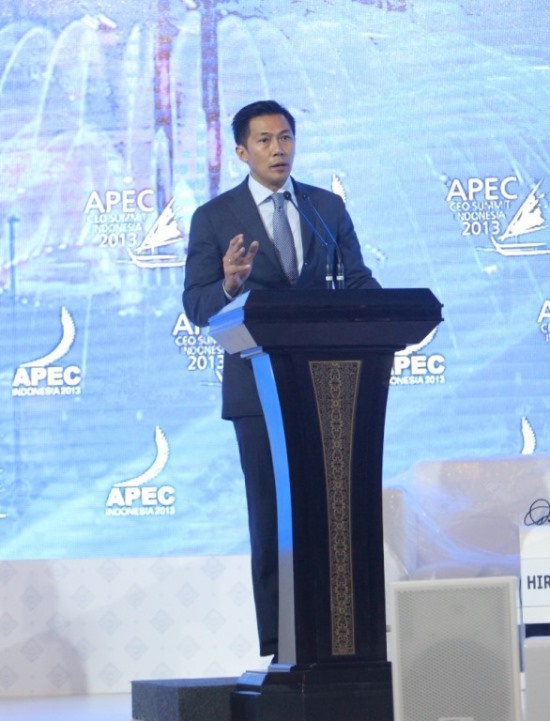|
Organizational Citizenship Behavior
In industrial and organizational psychology, organizational citizenship behavior (OCB) is a person's voluntary commitment within an organization or company that is not part of his or her contractual tasks. Organizational citizenship behavior has been studied since the late 1970s. Over the past three decades, interest in these behaviors has increased substantially. Organizational behavior has been linked to overall organizational effectiveness, thus these types of employee behaviors have important consequences in the workplace. Organ expanded upon Katz's (1964) original work. Definition of the concept Organ (1988) defines OCB as "individual behavior that is discretionary, not directly or explicitly recognized by the formal reward system, and that in the aggregate promotes the effective functioning of the organization". Organ, D. W. (1988). Organizational Citizenship behavior: The good soldier syndrome. Lexington, MA: Lexington Books. Organ's definition of OCB includes three ... [...More Info...] [...Related Items...] OR: [Wikipedia] [Google] [Baidu] |
Industrial And Organizational Psychology
Industrial and organizational psychology (I-O psychology) "focuses the lens of psychological science on a key aspect of human life, namely, their work lives. In general, the goals of I-O psychology are to better understand and optimize the effectiveness, health, and well-being of both individuals and organizations." It is an applied discipline within psychology and is an international profession. I-O psychology is also known as occupational psychology in the United Kingdom, organisational psychology in Australia, South Africa and New Zealand, and work and organizational (WO) psychology throughout Europe and Brazil. Industrial, work, and organizational (IWO) psychology is the broader, more global term for the science and profession.Spector P. E. (2021). Industrial and Organizational Psychology: Research and Practice 8th ed. Hoboken, NJ: John Wiley. I-O psychologists are trained in the scientist–practitioner model. As an applied psychology field, the discipline involves both res ... [...More Info...] [...Related Items...] OR: [Wikipedia] [Google] [Baidu] |
Counterproductive Work Behavior
Counterproductive work behavior (CWB) is employee's behavior that goes against the legitimate interests of an organization. This behavior can harm the organization, other people within it, and other people and organizations outside it, including employers, other employees, suppliers, clients, patients and citizens. It has been proposed that a person-by-environment interaction can be utilized to explain a variety of counterproductive behaviors. For instance, an employee who is high on trait anger (tendency to experience anger) is more likely to respond to a stressful incident at work (e.g., being treated rudely by a supervisor) with CWB. Some researchers use the CWB term to subsume related constructs that are distinct: * Workplace deviance is behavior at work that violates norms for appropriate behavior. * Retaliation consists of har ... [...More Info...] [...Related Items...] OR: [Wikipedia] [Google] [Baidu] |
Transactional Leadership
Transactional leadership (or transactional management) is a type of leadership style that focuses on the exchange of skills, knowledge, resources, or effort between leaders and their subordinates. This leadership style prioritizes individual interests and extrinsic motivation as means to obtain a desired outcome. It relies on a system of penalties and rewards to achieve short-term goals. Although James Downton is generally credited with coining the term "transactional leadership", James MacGregor Burns expanded upon the concept in his influential 1978 book ''Leadership''. * Transactional leadership is characterized by two primary factors: contingent rewards and management-by-exception. Contingent reward concerns the rewards that are granted in recognition of effort and good performance. Management-by-exception maintains the status quo, intervening only when subordinates do not meet acceptable performance levels or when corrective action is required to improve performance. Bu ... [...More Info...] [...Related Items...] OR: [Wikipedia] [Google] [Baidu] |
Transformational Leadership
Transformational leadership is a leadership style in which a leader's behaviors influence their followers, inspiring them to perform beyond their perceived capabilities. This style of leadership encourages individuals to achieve unexpected or remarkable results by prioritizing their collective vision over their immediate self-interests. Transformational leaders collaborate with their followers or teams to identify changes and create a vision that guides these changes through influence and inspiration. The transformation process is carried out with the active involvement of committed group members, who align their efforts with both organizational goals and their personal interests. As a result, followers' ideals, maturity, and commitment to achievement increase. This theory is a central component of the Full Range Leadership Model, which emphasizes empowering followers by granting autonomy and authority to make decisions after they are trained. The approach fosters positive changes ... [...More Info...] [...Related Items...] OR: [Wikipedia] [Google] [Baidu] |
Mediated
''Mediated: How the Media Shapes Your World and the Way You Live in It'' is a non-fiction book by anthropologist Thomas de Zengotita published in 2005 by Bloomsbury about the effect of the media in the Western world. Summary ''Mediated'' aims at creating awareness rather than offering ready-made solutions to remedy the intrusion of too much media in our industrial societies. Rather than writing yet another pamphlet against the media, the author chooses to focus on the mechanisms and the processes of our ''mediated'' society. The basis of his analysis is that the opposite of reality is not phony or superficial, it is optional. We choose between options to determine who we are, to make statements to the world about who we are. People, he argues, have always done so, but the difference with today's situation is that we have a lot more options. In terms of options, comparing the modern world with the post-modern world is like comparing a breeze with a hurricane. The media force ... [...More Info...] [...Related Items...] OR: [Wikipedia] [Google] [Baidu] |
Negative Affectivity
In psychology, negative affectivity (NA), or negative affect, is a personality variable that involves the experience of negative emotions and poor self-concept. Negative affectivity subsumes a variety of negative emotions, including anger, contempt, disgust, guilt (emotion), guilt, fear, and Anxiety, nervousness. Low negative affectivity is characterized by frequent states of calmness and serenity, along with states of confidence, activeness, and great enthusiasm. Individuals differ in negative emotional reactivity.Tellegen, A. (1985). Structures of mood and personality and their relevance to assessing anxiety, with an emphasis on self-report. In A. H. Tuma & J. D. Maser (Eds.), Anxiety and the Anxiety disorders, (pp. 681-706), Hilssdale, NJ: Erlbaum. Trait negative affectivity roughly corresponds to the dominant personality factor of anxiety/neuroticism that is found within the Big Five personality traits as emotional stability. The Big Five are characterized as openness, conscie ... [...More Info...] [...Related Items...] OR: [Wikipedia] [Google] [Baidu] |
Positive Affectivity
Positive affectivity (PA) is a human characteristic that describes how much people experience positive affects (sensations, emotions, sentiments); and as a consequence how they interact with others and with their surroundings. People with high positive affectivity are typically enthusiastic, energetic, confident, active, and alert. Research has linked positive affectivity with an increase in longevity, better sleep, and a decrease in stress hormones. People with a high positive affectivity have healthier coping styles, more positive self-qualities, and are more goal oriented. Positive affectivity also promotes an open-minded attitude, sociability, and helpfulness. Those having low levels of positive affectivity (and high levels of ''negative'' affectivity) are characterized by sadness, lethargy, distress, and un-pleasurable engagement (see negative affectivity). Low levels of positive affect are correlated with social anxiety and depression, due to decreased levels of dopamine. ... [...More Info...] [...Related Items...] OR: [Wikipedia] [Google] [Baidu] |
Agreeableness
Agreeableness is the trait theory, personality trait of being kind, Sympathy, sympathetic, cooperative, warm, honest, straightforward, and considerate. In personality psychology, agreeableness is one of the Big Five personality traits, five major dimensions of personality structure, reflecting individual differences in cooperation. People who score high on measures of agreeableness are Empathy, empathetic and Altruism, self-sacrificing, while those with low agreeableness are prone to selfishness, insincerity, and zero-sum thinking. Those who score low on agreeableness may show dark triad tendencies, such as narcissism, narcissistic, Antisocial personality disorder, antisocial, and Manipulation (psychology), manipulative behavior. Agreeableness is a superordinate trait, meaning it is a grouping of personality sub-traits that cluster together statistically. Some lower-level traits, or Facet (psychology), facets, that are commonly grouped under agreeableness include Trust (social sci ... [...More Info...] [...Related Items...] OR: [Wikipedia] [Google] [Baidu] |
Leadership
Leadership, is defined as the ability of an individual, group, or organization to "", influence, or guide other individuals, teams, or organizations. "Leadership" is a contested term. Specialist literature debates various viewpoints on the concept, sometimes contrasting Eastern world, Eastern and Western world, Western approaches to leadership, and also (within the West) North American versus European approaches. Some U.S. academic environments define leadership as "a process of social influence in which a person can enlist the aid and Peer support, support of others in the accomplishment of a common and Ethics, ethical task (project management), task". In other words, leadership is an influential Power (social and political), power-relationship in which the power of one party (the "leader") promotes movement/change in others (the "followers"). Some have challenged the more traditional managerial views of leadership (which portray leadership as something possessed or owned by ... [...More Info...] [...Related Items...] OR: [Wikipedia] [Google] [Baidu] |
Personality Psychology
Personality psychology is a branch of psychology that examines personality and its variation among individuals. It aims to show how people are individually different due to psychological forces. Its areas of focus include: * Describing what personality is * Documenting how personalities develop * Explaining the mental processes of personality and how they affect functioning * Providing a framework for understanding Individual, individuals "Personality" is a dynamic and organized set of characteristics possessed by an individual that uniquely influences their environment, cognition, emotions, motivations, and Behavioural sciences, behaviors in various situations. The word ''personality'' originates from the Latin ''persona'', which means "mask". Personality also pertains to the pattern of thoughts, feelings, Adjustment (psychology), social adjustments, and behaviors persistently exhibited over time that strongly influences one's expectations, Self-concept, self-perceptions, Valu ... [...More Info...] [...Related Items...] OR: [Wikipedia] [Google] [Baidu] |




